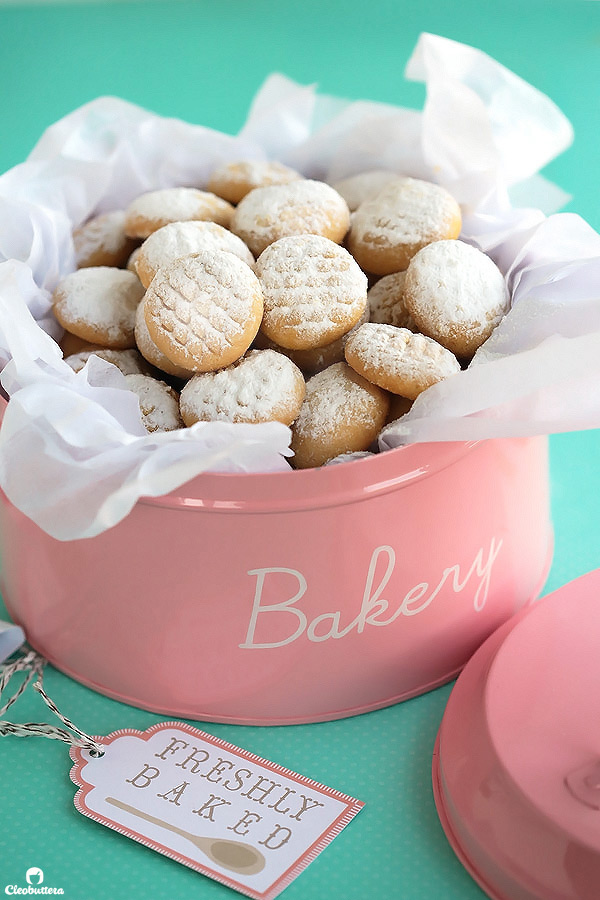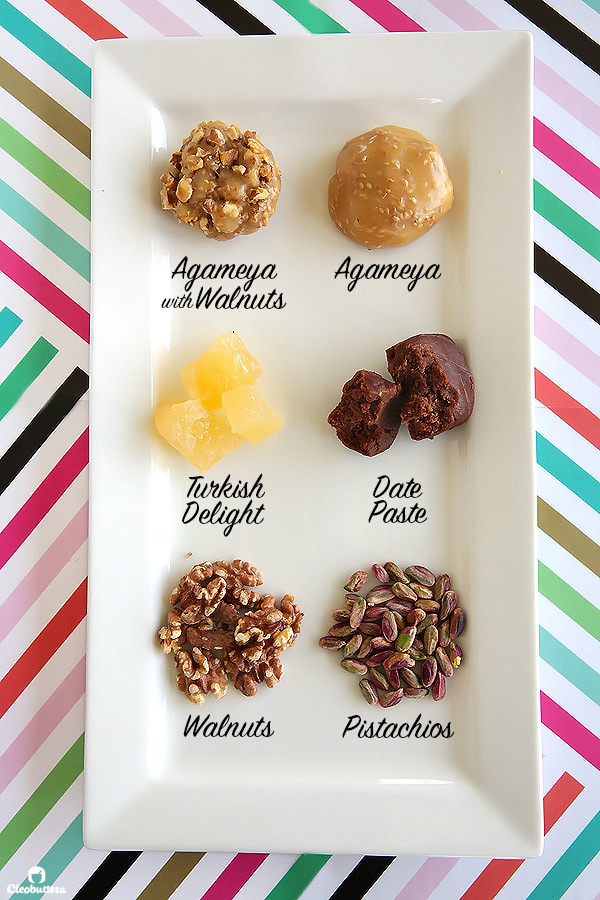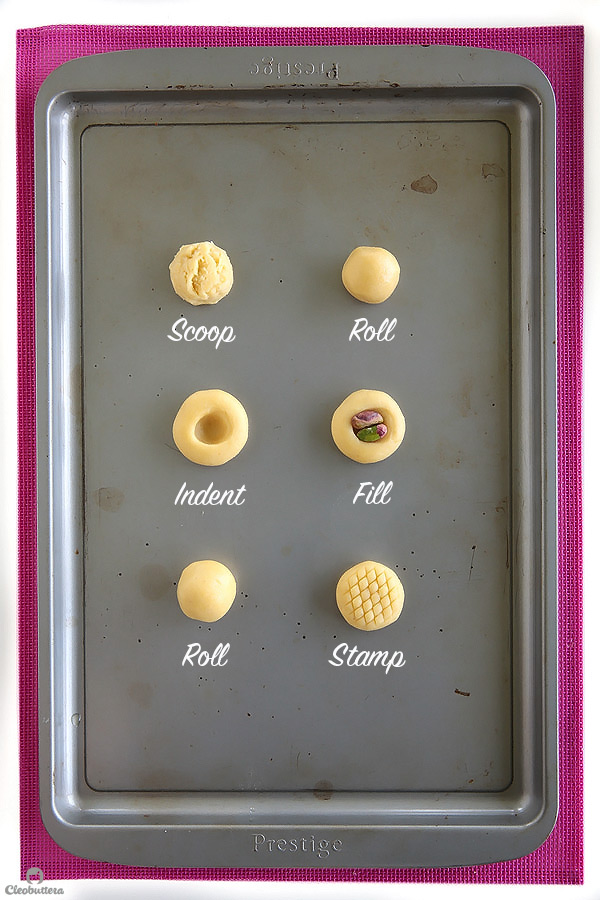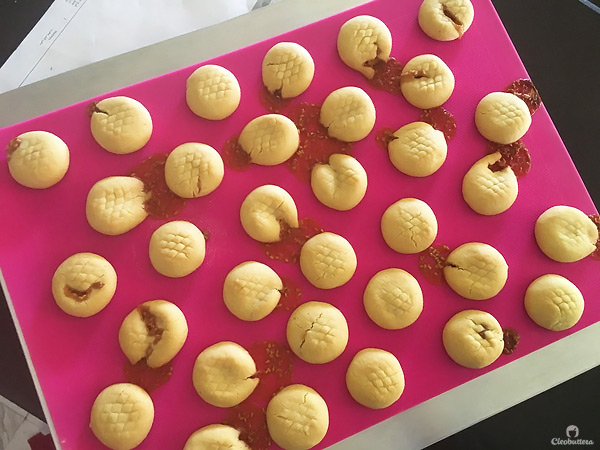👨 Shop Men's Health products from iHerb : https://fas.st/mPHRY1 Read more about Men's health in Ayurveda 👇 https://ayurveda-by-nelly.blogspot.com/2020/08/mens-health-in-ayurveda.html

An AMAZING recipe for traditional Eid (post Ramadan Feast) cookies! These have a fabulously fine crumb and delicate texture that dissolves in the mouth. Filling variations included!
Ramadan’s Middle Eastern Dessert palooza has come to an end and we’re sealing it with Eid Cookies! So roll up your sleeves people because we’re about to get covered in powdered sugar! Let’s back up a little for those of you who’re lost here.
Eid (in this case Eid Al Fitr) is the feast holiday that marks the end of Ramadan. Because after a month-long of fasting, you bet we’re going to be feasting.
Eid El-Fitr celebrations last for 3 days, and it’s a time where people exchange gifts, wear new clothes (aka the best excuse to go shopping😉) and gather for… you guessed it…a feast.
And no Egyptian feast is complete without Kahk. The lightly spiced crumbly cookie stuffed with sweet surprises and buried under copious amounts of powdered sugar.Kahk is believed to date back in Egypt to the 10th century, when palace kitchens made special cookies stuffed with gold coins and distributed them to the poor. Things have gone downhill ever since and we’ve been getting nuts and gooey honey filling instead of gold coins, but whatever…they’re still great!
But as much as they are delicious, Kahk is more about the essence of the celebration than about anything else. It is more of an event; an informal ritual that Egyptian families look forward to, than just a mere cookie that we love to gobble up. The process of making them is rarely a one-man show, but a chance for families to gather around baking trays and share stories and laughs over the hours of preparation.

Kids take part in putting their artistic touches by stamping their designs and filling the cookies, while grownups take over the baking part.
Of course, every household has its own unique recipe that they treasure, but the basics remain the same. Kahk is a type of buttery sugar cookie with a sandy texture and mildly aromatic flavor. The cookies themselves are barely sweet, making way for more sweetness in the form of fillings and powdered sugar coating. In term of looks, they are comparable to Mexican Wedding Cookies and Snowballs. I have a feeling, the texture is similar too. Gotta try them to be sure:)
Kahk have these signature prints on top that are plain fun to make with special stampers, but also acts as a label to the different types of fillings. They also help the powdered sugar adhere to the surface.
Kahk can have so many different fillings or can be left plain. Of course it doesn’t come as a surprise that the kiddos will only have them plain or they’re not eating any.
The most popular filling by far is the Agameya (my favorite!). It’s a cooked mixture of ghee, honey, sesame seeds and optional nuts; most often walnuts. It’s sweet and gooey and irresistible. Kahk can also be stuffed with Turkish delight (malban), sticky sweet date paste (agwa) or plain nuts like walnuts and pistachios.

Though made from very simple ingredients, Agameya can be a little tricky to make. If its runny, it will ooze out of the cookies as they bake, and if its too hard, it will stick to your teeth and ruin your kahk experience. Trust me, I’ve had my fair share of both extremes, but I was finally able to settle on the right ratio of ingredients, paired with the perfect cooking period to produce a Agameya that is perfectly malleable and oh-so-delcious.

Now before we begin making our cookies, its a good idea to get all our fillings portioned and ready to go.
No wait… before we get elbow deep into making them, I need to tell you about this recipe in particular. I don’t mean to brag, but it makes the best kahk I’ve ever tasted. It is THE recipe you want in your life!
Believe it or not, I was never into kahk in the first place until last year. I mean they’ve always tasted ok to me, but they were never something I’d crave or would waste calories on. I’ve always had some reservations about their coarse texture and lack of sweetness in the cookie itself. I just enjoyed their presence and the joy they brought , but never the eating part. Until my sister-in-law got me a box of Kahk from Le Carnaval; one of Cairo’s finest high-end patisseries. One bite of their melt-in-the-mouth cookies was able to change my mind about Kahk. They were all of a sudden…cravable. I quickly became so consumed with finding a recipe that measured up to Le Carnaval’s. And with the guidance of a pastry chef friend…I finally did! Yes, it took an entire year, but it was worth it.
Now these are not your Grandmother’s kahk; so don’t expect them to be. I want to say they’re better, but I know how everyone has their own idea of the perfect kahk. Let’s just say that they are a modern twist on an old fashioned favorite. But even my husband’s grandmother, who’s a self-proclaimed kahk connoisseur fell in love with these, so that’s saying something!
Unlike traditional recipes, they don’t have yeast, so they don’t taste “bread-y” like the olden days ones, which actually makes them perfect for people who don’t like kahk for that reason. The addition of baking powder and a little bit of powdered sugar in the dough makes them much much more delicate and finer in texture then classic recipes. If you don’t like how coarse typical kahk tends to be, this is the recipe for you! They simply taste…chic, and will remind of petite four cookies without being confused as one .
Before we dive into details, here’s a quick glimpse of how they come together to give you an idea.
The lightly aromatic flavor of this kahk is on point and part of it comes from the use of Kahk Essence (Reehet El Kahk). It is a special blend of spices, specifically made for Kahk, which gives it its distinctive flavor. If you can get your hands on some, awesome! If you can’t, you can always leave it out and still have great kahk, or you could refer to the substitutions in the ‘Notes’ section of the recipe at the end of the post.
The other ingredient that either makes or breaks the flavor of these cookies, is ghee! Since A LOT goes into the dough, the flavor really comes through, so be sure to use the best quality you could find. Here’s how you could make your own.
I don’t get why Kahk has a reputation for being difficult to make. I mean… dry ingredients just get whisked together, then we dump in the ghee, mix a little…
Pour in some milk. And that’s it! Dough done.

Here comes my beloved mini ice cream scoop again. My number 1 kitchen gadget! Perfect for portioning the cookies so they’re all the same size.
Then to fill, you’re going to roll the dough into a ball, make an indentation using your thumb, stuff with your filling of choice, reroll to cover the filling then stamp.

Kids LOVE doing this part, so get them involved! Stamp, stamp, stamp using the special kahk stamper or any stamper really.
These tweezer thingies are also traditional, but no worries if you can’t find it…


Because there’s always the fork. A la peanut butter cookie style.In fact, you could skip the stamping all together if you want. They are a tradition more than anything else really. I actually recommend not stamping the agameya filled ones, as to not pierce the dough, which could let agameya ooze out.
Now you’re gonna bake all the cookies, EXCEPT for the agameya filled ones at 180C/ 350F for 22 to 25 minutes until firm to the touch and golden all over in color. Unlike any other cookie on this blog, you DO NOT want to underbake them. Bake aaaaaall the way through.
As for the Agameya-filled ones, these guys need some special treatment.
So unless you want to end up with cookies looking these, then listen up! I can’t tell you how many time I’ve had this sad situation of the kahk bursting open and spilling away the agameya, until a pastry chef shared his secret with me. Bake at super heat high for very little time. This bakes the cookies so fast before the agameya has a chance to put it’s pants on. And it works! So for the agameya-filled kahk, bake at 260C/ 500F for about 8 minutes or until firm to the touch and the tops are golden in color.
Allow the cookies to cool COMPLETELY, then let it snow! Wrap up some and give to your neighbor and enjoy the rest.You know you’re eating them wrong if you don’t get powdered sugar all over your face and shirt right?

That’s all folks! I hope you’ve enjoyed this Kahk 101 crash course, as well as the month-long virtual Ramadan experience in Egypt and all the Middle Eastern food that came with it.
Wishing you a wonderful holiday and great summer break for everyone!
YIELD: MAKES 135 (1 TABLESPOON SIZED) COOKIESFABULOUS KAHK (EID COOKIES)
INGREDIENTS
FOR THE KAHK:
- 1 kg (8 cups) all purpose flour
- 100g (1 cup minus 1 tablespoon) powdered sugar, plus extra for coating
- 3 tablespoons toasted sesame seeds (optional)
- 1 1/2 teaspoons (6g) baking powder
- 1/8 teaspoon salt
- 1 tablespoon (10g) Kahk Essence (Reehet El Kahk) (*see note below)
- 1 packet vanilla sugar (or 1/2 teaspoon vanilla extract)
- 600g (2 1/2 cups plus 2 tablespoons) ghee or clarified butter, at room temperature (*see note)
- 160g (2/3 cup) milk, at room temperature
FILLING OPTIONS:
- Leave them plain
- Agameya with/or without walnuts or favorite nut (honey filling) (ingredients below)
- Turkish delight with/or without walnuts (malban)
- Date paste (agwa)
- Toasted walnuts
- Pistachios
FOR THE AGAMEYA (HONEY FILLING):
- 3 tablespoons (42.5g) ghee or clarified butter
- 2 tablespoons (15g) all-purpose flour
- 1 cup (340g) honey
- 1 tablespoon (10g) toasted sesame seeds
- 1 cup (113g) coarsely chopped walnuts or favorite nut (optional)
INSTRUCTIONS
TO MAKE THE KAHK DOUGH:
- Prepare your fillings by rolling the agameya (with or without nuts) and date paste into macadamia nuts-sized balls. Keep the agameya in the fridge until ready to use. Cut the Turkish delight (with or without nuts) into small squares and keep the plain nuts nearby.
- Adjust oven rack to middle position and preheat the oven to 180C/ 350F (for plain and all types of filled kahk EXCEPT Agameya) or 260C/ 500F (for Agameya filled kahk ONLY).
- In the bowl of a stand mixer fitted with a paddle attachment, whisk together the flour, powdered sugar, sesame seeds (if using), baking powder, salt, kahk essence and vanilla until well combined.
- Add the ghee (or clarified butter) and mix on medium-low speed until well blended and the dry ingredients are evenly coated.
- With the mixer running on low speed, gradually pour in the milk. Continue mixing until a cohesive dough comes together.
- Using a tablespoon or a tablespoon-sized ice cream scoop with a release mechanism, scoop out tablespoons of dough and place on a baking sheet. You should have approximately 135 dough scoops.
- Roll each dough into a ball, then (if filling) press the center with your thumb to make an indentation for the filling to sit in. Add the filling of your choice, then gather the dough up over the filling to completely cover it. Make sure that no filling is peaking out. Roll the filled dough into a smooth ball.
- Arrange the dough balls onto a silicon mat or parchment paper lined baking sheet, leaving an inch of space between each one.
- For fun and to be able to distinguish between the different kahk fillings, give them some designs. Press lightly on the dough with a kahk stamper (khattama) or decorate with kahk shaping tweezers (mona'ash), if available. If not, make a cross hatch design using the twines of a fork, or simply press down with your hand and leave plain. DO NOT stamp agameya-filled dough, because this could tear the dough causing the agameya to ooze out while baking.

- Bake JUST the agameya-filled dough at 260C/ 500F for about 8 minutes or until firm to the touch and the tops are golden in color. Be careful not to burn them as the oven is super hot.
- Bake plain and everything else filled kahk (EXCEPT agameya) at 180C/ 350F for 22 to 25 minutes until firm to the touch and golden all over in color.
- Cool for a few minutes on the baking sheet, then transfer to a wire rack to cool COMPLETELY before dusting with powdered sugar, otherwise the sugar will melt on the kahk and make a wet surface.
- Using a small sieve, dust the kahk with a generous amount of powdered sugar or roll into a bowl full of sugar.
- Serve or store in a container. Kahk will keep well at room temperature for weeks and weeks.
TO MAKE THE AGAMEYA (HONEY FILLING):
- In a small saucepan over medium-high heat, melt the ghee (or clarified butter). Add flour and cook, stirring constantly with a small whisk, until the mixture turns golden blonde in color.
- Add the honey and bring to a boil, stirring constantly. Once boiled, cook a little longer until just thickened; 1 minute to 1 1/2 minutes. I actually set the timer to 1 minute and 15 seconds but timing may vary. Test the consistency, by dropping a little bit of the mixture in cold water. It should hold its shape but remain soft and malleable; it should not stick to the teeth. (Do not overcook, or it will harden).
- Remove saucepan from the heat and stir in the sesame seeds and nuts, if using.
- Transfer agameya to a small bowl and allow to cool to room temperature.
- Shape into small macadamia nut-sized balls. Keep in the fridge until ready to use.
RECIPE NOTES
- Here's a great tutorial for making your own clarified butter (ghee), in case you can't find it.
- Kahk essence is a powdered mixture of spices that gives Kahk its distinctive flavor. As far as I was able to know, it is a combination of ground mahlab, anise, and fennel. Mahlab is spice that comes from a black cherry stone and has an almond-like flavor with a slight sour taste. Kahk essence is readily available in the Egyptian at spice shops (El Attar). Though I wasn't able to find a recipe for a homemade version, I guess you could experiment with combining equal parts of ground mahlab, anise and fennel. Otherwise, you could just leave it out or substitute it with the same amount of rose water.
Kahk dough recipe mostly adapted from pastry chef friend, Ahmed El Rayes.
Agameya recipe mostly adapted from Chef Osama El Sayed.
Measurements Note: All recipes of this site have been developed using weight measurements. Although US volume measurements have been included for your convenience, it is highly encouraged that you weigh your ingredients using a kitchen scale to get the best possible results. Due to the sensitive nature of baking, kitchen scales are proven to yield more accurate and consistent results than measuring cups. Enjoy!
Comments
Post a Comment